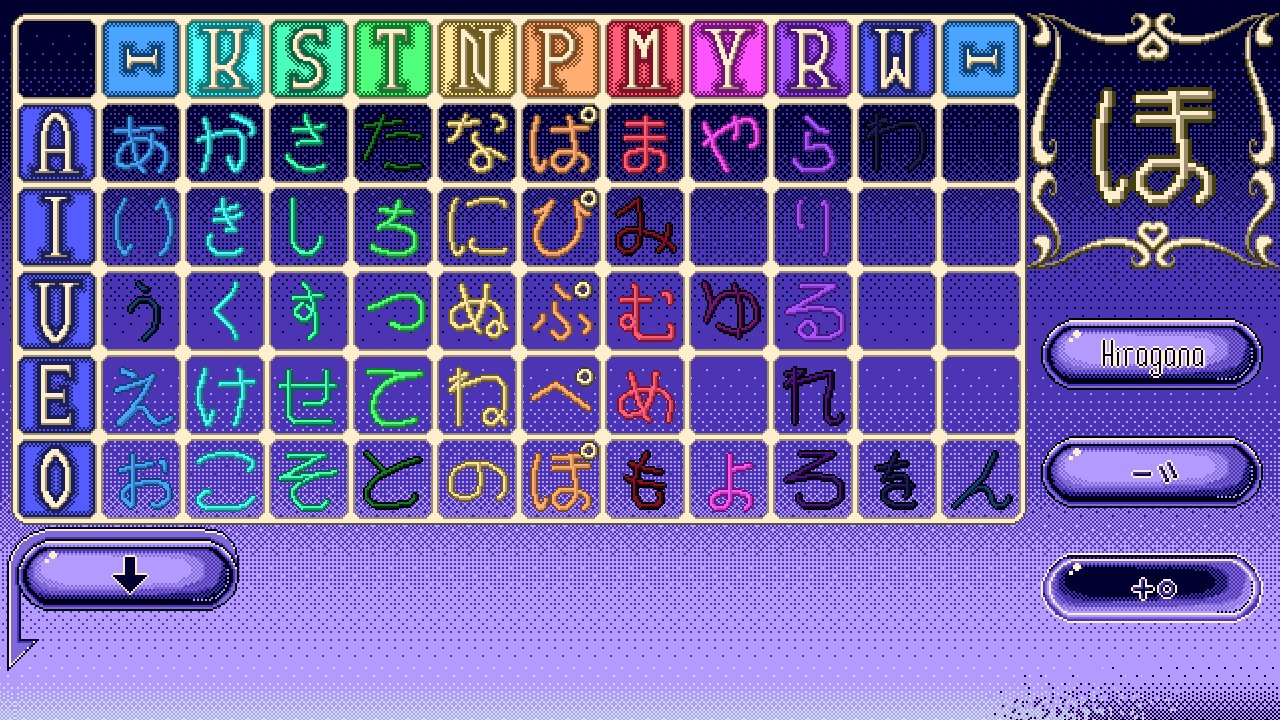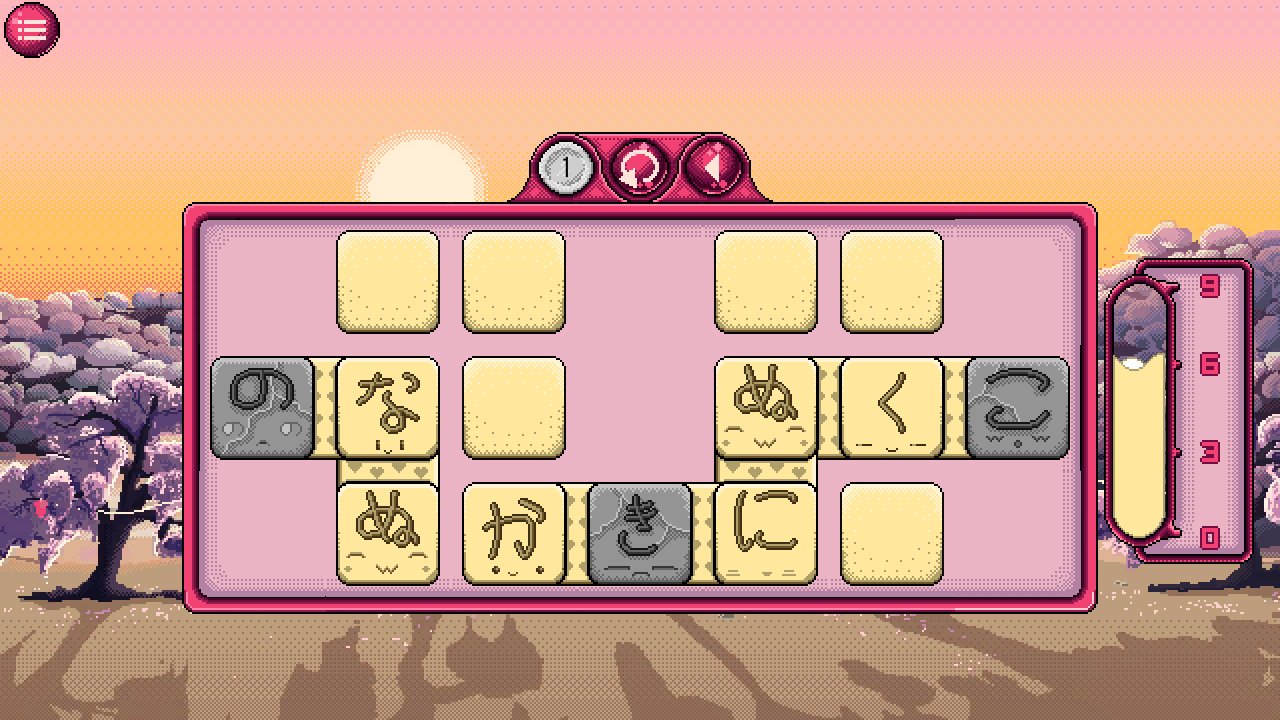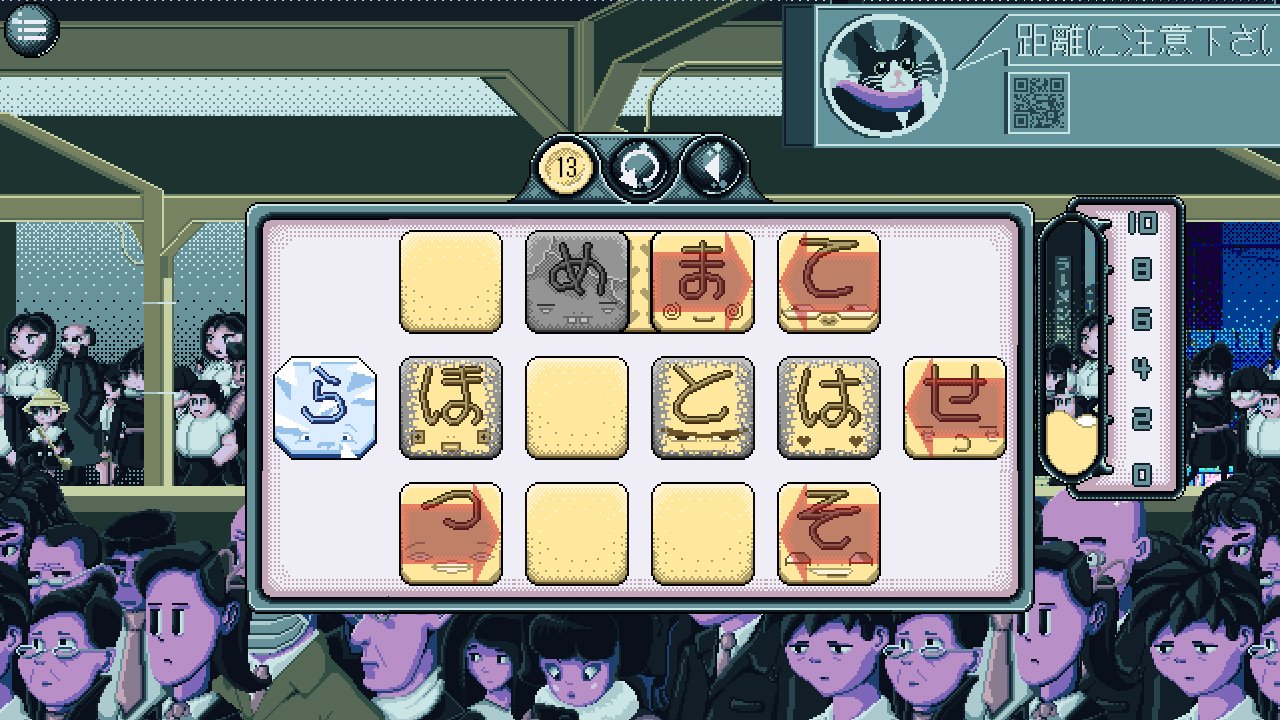Kana Quest (Review)
7 years ago I showed up to my first Japanese class, excited by the idea of learning something new, and was met with my very first hurdle – before we could really even get into basic vocabulary, we had to learn how to read kana. Sure, there’s a whole lot more to learn after getting katakana and hiragana down, but it’s the first real stepping stone and what helps unlock everything else. It’s also hard to get used to for a lot of beginners who are used to roman alphabets and hope to get by on romaji as long as they can.
As a longtime learner of Japanese, finding new learning tools is always very exciting, so Kana Quest – a “kawaii kana match-em-up” – caught my attention the first time I saw it. Developed by Not Dead Design and published by WhiteThorn Games, Kana Quest’s vivid aesthetic and low-stakes gameplay seemed like a great fit.
To talk about Kana Quest, I think we need to treat it as two different things: a learning tool, and a puzzle game.
As a learning tool, Kana Quest offers to teach its players the first foundation of Japanese – its “alphabet” (technically syllabary, but we’ll save that for another time). Kana are strange to get used to for a lot of learners – after all, if you’re used to the roman alphabet, you probably will have an easier time reading “ohayō” than 「おはよう」. That’s okay!
Kana Quest approaches this by turning kana into cute little tiles (each with its own expression) that you can click to hear how they sound. Each puzzle tasks the player with connecting kana based on their pronunciation – they might match because their consonant sound is ‘k’ for example, like ku and ka, or they might match by vowel sound, like ha and ra. The goal is to connect all the kana so that there is a continuous line of matching tiles. To get through a stage, you’ll have to take each kana’s pronunciation and solve the puzzle accordingly.
This is actually a pretty solid way to learn information because it doesn’t only rely on constant exposure, but also makes you interact with each kana repeatedly – eventually as you continue through levels, it’s likely you won’t need to double-check sounds as often anymore, as you start to get used to what each character sounds like. Even better, as the puzzles get wilder and you spend more time trying to match up sounds, you’re more likely to retain them as well – the more weird, wild, or frustrating something that you’re trying to learn is, quite often the better you’ll be able to recall it later.
Once you’re comfortable enough with hiragana, you can switch to katakana to learn more characters. For a fresh beginner in the Japanese language, this is a fun way to start getting used to sounds and symbols, and start building a foundation that will help quite a bit when it’s time to start going over basic vocabulary.
As a puzzle game, I really like Kana Quest, and the puzzle portion isn’t at all dependent on your Japanese skill level to be fun, because it relies on puzzles that can still be challenging regardless of if you’ve never touched the language, don’t care to learn it, or are fluent. The early stages are fairly breezy (though a couple of them I still can’t figure out how on earth to use less moves and get that gold medal!). However, as the game progresses, more challenges will be thrown your way – some tiles require you to guess the kana based on what other kana they match with, while other tiles can’t be moved at all. There are even tiles that can only be moved in one direction, meaning you have to be very careful about how you move forward.
You will have a limit of moves that you can use to get a gold medal, and if you use more moves than that you’ll dip into silver, then bronze. But notably you aren’t just hardstuck if you are struggling with a specific puzzle. One of my favourite features is the option to turn on access to all stages. If a player wants to challenge themselves with unlocking worlds by accumulating gold medals, they can, but they can also move forward when they feel like it, even skipping puzzles that are frustrating and they need a break from (a true gift to any puzzle gamer – I promise).
Combined with the colorful, pixelated scenes of Japan and a fun, pop-y soundtrack on repeat, Kana Quest is surprisingly relaxing to just sit down with and spend awhile solving puzzles. If you’re interested in learning Japanese and think that this might fit your learning style, I think it’s worth it! And if you already know Japanese or aren’t interested at all, that definitely shouldn’t be a deterrent – for a game geared toward learning, it’s surprisingly appropriate for just about anyone who enjoys a cute puzzle set to good music.
Kana Quest is already available on Steam worldwide and on Nintendo Switch in North America and Europe. You’ll also be able to pick it up on Nintendo Switch in Japan, Hong Kong, and South Korea on March 30, 2023. And, if like me, you love the soundtrack? You can pick that up on Steam too!





